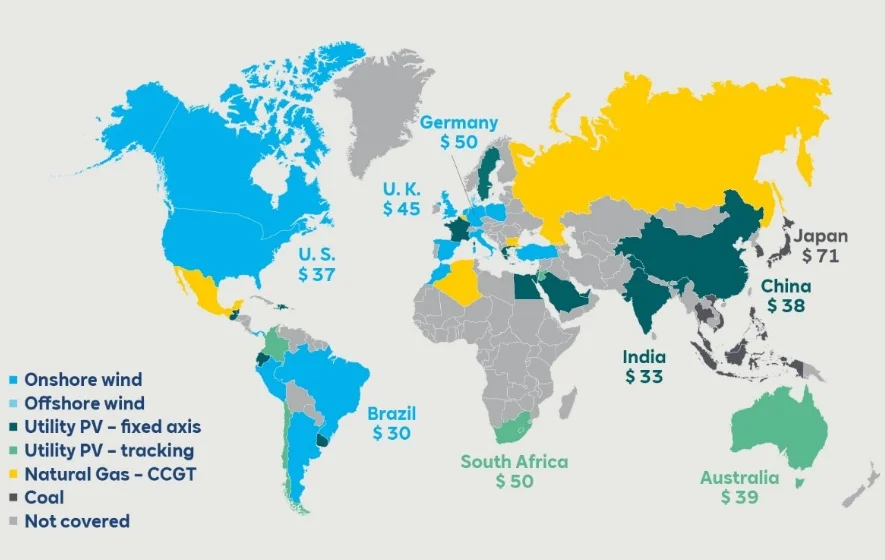In many parts of the world, wind and solar PV energy has become much cheaper than electricity from fossil fuel. However, since green energy is not available around the clock, gas power stations are often used as a grid reserve. But these could soon be replaced by a more environmentally friendly technology. The study entitled “Scale-up of Solar and Wind Puts Existing Coal, Gas at Risk“ by energy market research firm BloombergNEF (BNEF) shows that battery storage costs are on a constant decline. Battery systems can store renewable energy and feed it into the grid when needed. In some regions, this already costs less than operating gas-fired power stations.
In their study, the BNEF experts establish that solar and wind farms are already the most cost-effective sources of energy for more than two-thirds of the global population. This is primarily owed to the fact that relevant electricity generation costs – covering energy conversion, financing and operation – have dropped dramatically in recent years. Since mid-2019, they have declined by nine percent to 44 US dollars per megawatt hour (MWh) for onshore wind and by four percent to $50/MWh for solar PV.
This progress is substantial, keeping in mind that ten years ago, solar and onshore wind power cost more than $300 and $100/MWh, respectively. A map of the world shows the cheapest energy type for 47 countries.
Bigger projects
Tifenn Brandily, the study’s main author, primarily traces the drop in wind and solar costs back to technological improvements. He cites portfolio expansion and increasingly large projects planned by developers as further drivers. This reduces operation and maintenance expenditure while improving the developers’ position when conducting negotiations.
By consequence, the average size of an onshore wind farm stands at 73 MW today, more than double the figure for 2016 (32 MW). On top of that, solar PV installations have grown their output to 27 MW, tripling their previous rating. BNEF predicts that this trend will cause MW costs to drop to some $20 by 2030.
Battery costs halved
The authors also observe that battery costs are decreasing, driven by the increasing size of plants, indeed dropping more than energy production costs. In the last two years, the cost of a battery storage system has been cut in half, now amounting to $150/MWh. In areas required to import gas such as Europe, China and Japan, battery storage has thus already become the most affordable technology for offsetting peaks in renewable energy generation.
Photo credit: shutterstock.com, Nutthapat Matphongtavorn

